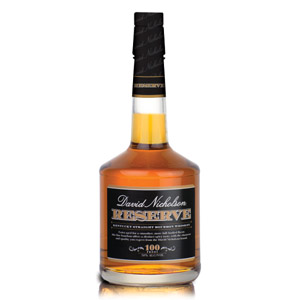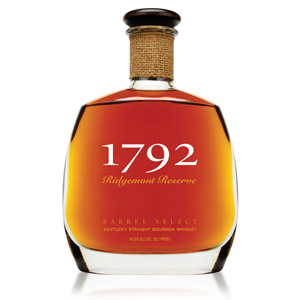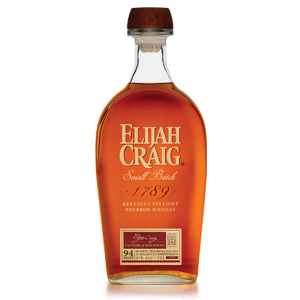Last week I talked about David Nicholson 1843 bourbon, and rather than split up a pair of besties, I thought I’d continue this week with the David Nicholson Reserve 100 Proof, which seems to be attempting to compete with the bottled-in-bond (BIB) market, without actually being bottled in bond (a term for whiskey aged in government bonded warehouses originally intended to preserve the integrity of spirits). Like BIB bourbons, it is released at 50% ABV (100 proof). Also like BIB bourbons, we can assume that if Luxco is adhering to labeling requirements the bourbon – a Kentucky straight bourbon – is at least 4 years of age. Otherwise, it would be required to carry an age statement.
Although it shares a striking label resemblance to the 1843 line, the Reserve uses a rye-flavored mash bill and is not wheated. It’s also sourced from an undisclosed distillery in Kentucky, possibly Heaven Hill, and bottled by Luxco in St. Louis. Soon, however, distillation will move to the new Lux Row distillery in Bardstown, Kentucky. Expect to pay a $5 premium over the 1843. Let’s see if it’s worth it…
Nose: Powerfully rye-heavy: lots of cherry-infused clove, cinnamon stick, and mulled wine. Somewhat sharp and spirity at 50% ABV. Medium-sweet, with some light caramelized sugars and an oaky undertone.
Palate: Thin body. Tannic and tart, with a middling tongue burn. Some sweet kettle corn notes emerge after the burn subsides, and a reprise of the spices promised by the nose. Cinnamon red-hots, a thin glaze of vanilla frosting.
Finish: Of medium length. A little bit of everything – some sweetness and vanilla, some dry oak, some dusty cinnamon. Fades without changing much, and no bitterness.
With Water: Water doesn’t seem to change the aroma much, but adds a welcome nuttiness to the palate and especially the finish. Water is advisable here, and also helps to tame the high ABV.
Overall: The rye certainly packs a punch here, with a full complement of spices, but it fails to elevate the corn/sweet bourbon out of the $20 rut. At $33, that actually makes this overpriced in my view. The proof is right, and it’s perfectly passable in cocktails, but it won’t shift Eagle Rare 10 or even basic Buffalo Trace out of my cabinet lineup.
It might just be the mash bill, but I don’t detect any similarities between this and the David Nicholson 1843, which I actually prefer. I’d guess that they were distilled at different locations. In fact, it’s worth noting that this bottle’s label indicates distillation and aging somewhere in Kentucky, while the 1843 does not mention its state of origin. Considering the two labels were clearly designed at the same time, that might speak volumes.








